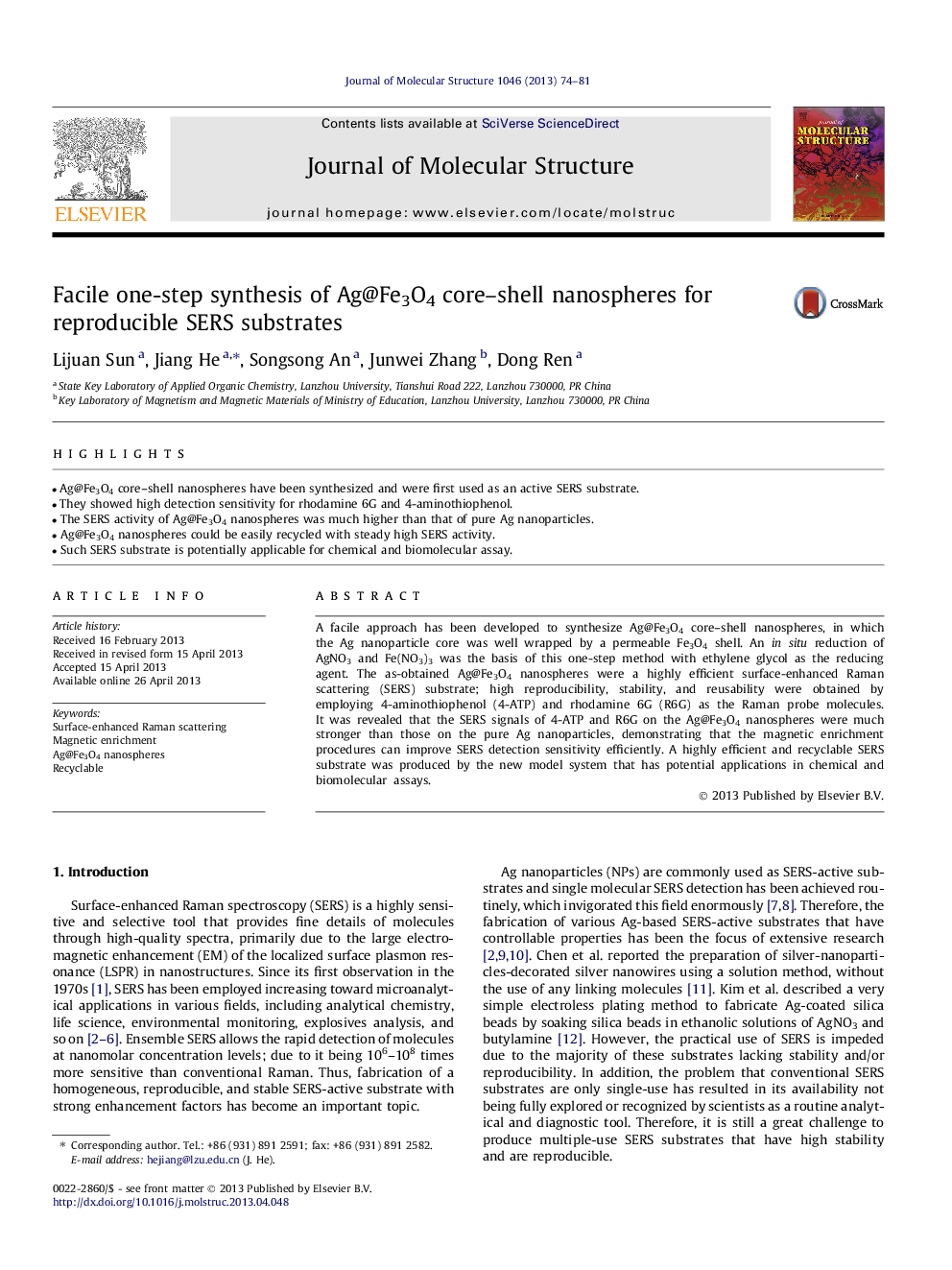| Article ID | Journal | Published Year | Pages | File Type |
|---|---|---|---|---|
| 1405963 | Journal of Molecular Structure | 2013 | 8 Pages |
•Ag@Fe3O4 core–shell nanospheres have been synthesized and were first used as an active SERS substrate.•They showed high detection sensitivity for rhodamine 6G and 4-aminothiophenol.•The SERS activity of Ag@Fe3O4 nanospheres was much higher than that of pure Ag nanoparticles.•Ag@Fe3O4 nanospheres could be easily recycled with steady high SERS activity.•Such SERS substrate is potentially applicable for chemical and biomolecular assay.
A facile approach has been developed to synthesize Ag@Fe3O4 core–shell nanospheres, in which the Ag nanoparticle core was well wrapped by a permeable Fe3O4 shell. An in situ reduction of AgNO3 and Fe(NO3)3 was the basis of this one-step method with ethylene glycol as the reducing agent. The as-obtained Ag@Fe3O4 nanospheres were a highly efficient surface-enhanced Raman scattering (SERS) substrate; high reproducibility, stability, and reusability were obtained by employing 4-aminothiophenol (4-ATP) and rhodamine 6G (R6G) as the Raman probe molecules. It was revealed that the SERS signals of 4-ATP and R6G on the Ag@Fe3O4 nanospheres were much stronger than those on the pure Ag nanoparticles, demonstrating that the magnetic enrichment procedures can improve SERS detection sensitivity efficiently. A highly efficient and recyclable SERS substrate was produced by the new model system that has potential applications in chemical and biomolecular assays.
